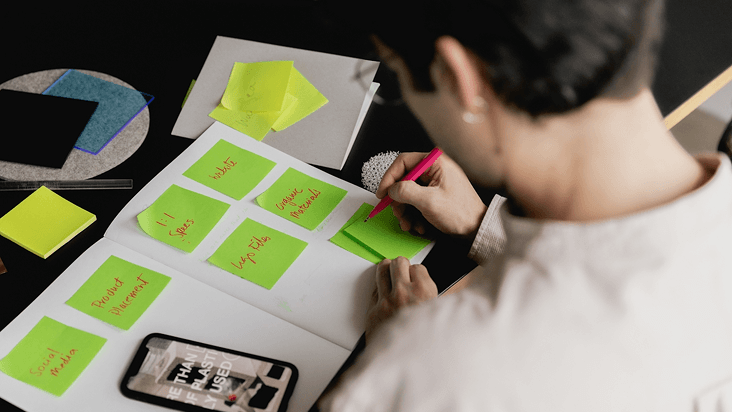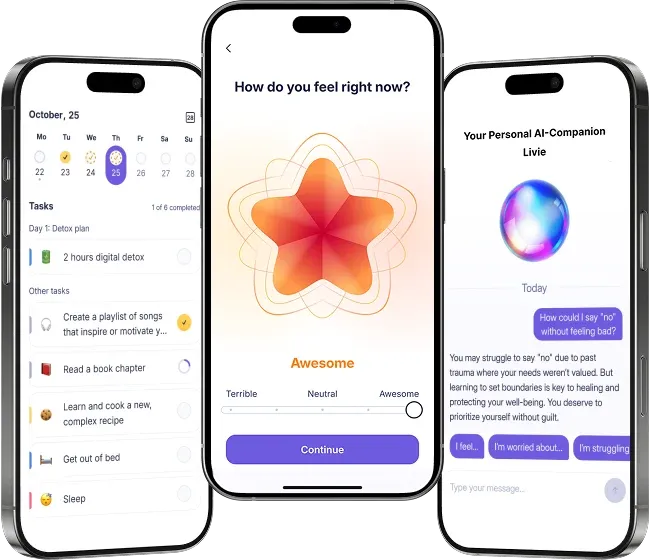How procrastination can actually be productive

Ever cleaned the kitchen instead of starting something urgent? That might be productive procrastination redirecting energy to smaller, helpful tasks while avoiding an unpleasant task. Even shifting your focus to a low-stakes task can help you feel back in motion. You're still moving forward. It’s a form of productive procrastination not stopping, just shifting where your effort goes.
This doesn't mean you're lazy. Done right, procrastination can reduce stress, support mental well being, and unlock creativity. It gives your brain space to explore new ideas and feel good while staying active — even in a difficult moment.
Understanding the Concept of Productive Procrastination
The strategy, called structured procrastination and introduced by John Perry, involves using delay to accomplish other useful things. Instead of jumping into stress, you clean your space or update your to-do list. These actions may seem minor, but they count as forward movement when a larger task feels blocked. These aren't time-wasters — they build momentum and help you gain confidence to get started.
Completing small tasks that support a larger project can boost motivation and deliver productivity benefits that last beyond the moment.
Why People Procrastinate
Giodella’s data says over 90% procrastinate regularly. Many do it semi-productively — exactly the idea behind structured procrastination: breaking delay into useful action.
Psychologists like Ferrari connect procrastination to deeper causes: low self esteem, emotional avoidance, or a time management problem. In some cases, this leads to chronic procrastination — the kind that loops endlessly. But even then, small changes and redirection can help.
Moderate procrastination can reduce anxiety, manage negative feelings, and strengthen prioritization skills. It’s a form of productive procrastination that works when used intentionally.
Procrastination Is More Common Than You Think
Procrastination is a widespread phenomenon that manifests in various forms, allowing everyone to delay tasks in their way. Research indicates that, on average, individuals spend about 47% of their time online procrastinating, translating to more than an hour and a half per day.
Due to influential task characteristics, people often gravitate toward avoiding the most unpleasant projects and choosing more desirable ones, even if this solution may turn counterproductive in the long run.
The benefits of avoiding certain tasks
Adam Grant, in Originals, says original thinkers often let ideas simmer. Research supports that short breaks an incubation phase help people solve problems creatively.
Taking a break or shifting to a creative project triggers the brain’s default mode network, which is linked to brainstorming and creative thinking. That’s why practicing moderate procrastination can offer surprising benefits — it gives your brain space to recharge, sort through clutter, and return with clarity.
Rather than slowing you down, this intentional delay can actually improve your overall productivity — especially when used as a tool for recovery. Used this way, productive procrastination becomes a tool for working with your brain, not against it.
Improve Creative Thinking and Positive Self Talk
Productive procrastination isn't just about doing something — it's about how you think while you're doing it. Positive self-talk plays a key role: it helps reduce anxiety, shift internal pressure, and turn avoidance into momentum.
Chunk Your Work and Build a Flow
- Break tasks into chunks. Define how much time to spend on each. It reduces overwhelm and endless drift. This approach not only makes large tasks feel manageable, but also helps you begin a new project without resistance.
- Use tools like the Pomodoro technique to stay grounded. Such tools break the cycle of procrastinate-react-repeat and contribute to long-term productivity without burnout.
- Maintain a to-do list and highlight important tasks. This helps reduce decision fatigue and keeps you focused on upcoming important deadlines without panic. Even a short, focused task can reduce stress and help you get started when you're stuck.
- Supportive internal self-talk reduces anxiety and helps you feel ready. It also helps the tension around a project, turning it from something threatening into something you can handle step by step.
Sirois F.M. says procrastination can either help or harm depending on how we feel about it. Use it consciously, and it becomes a creative process that lets you accomplish things and build momentum.
It also creates a buffer between action and self-criticism, reducing the weight of negative feelings and anxiety that often fuel the urge to procrastinate. This space protects your motivation and helps you stay connected to what feels essential as a person. Sometimes, it only takes a few moments of clarity to unlock your next step.
Micro-Wins That Create Momentum
- Making progress isn't always visible. It might just mean texting a family member or noticing how your brain simply resists discomfort. Well-chosen tasks — even simple ones — can create forward energy and become part of a truly productive mindset. Start with whatever feels easiest, or whatever makes the most sense at the moment. Putting structure around moments of hesitation, like writing a single word or choosing a color for a slide can be all it takes to move forward. Sketching a diagram for a project, listing potential section headers, or naming a folder can all be micro-wins that lead to real creative momentum.
- Building new skills around awareness is key. Especially for those who struggle with chronic procrastination or face an underlying time management problem, learning to pause with intention can interrupt the loop and help them tackle important tasks with more clarity and motivation.
- Returning to a meaningful project through small, achievable tasks helps reduce the urge to procrastinate and builds real momentum.
For example, outlining just the intro of a presentation or organizing your browser tabs might seem small — but these simple actions can reduce anxiety, create clarity, and lead you to begin without overwhelm.
When Small Efforts Build Big Change
- Even if you procrastinate, you're not failing. Each small action moves you closer to finishing the project — even if it’s just one paragraph or step at a time. At the last minute, writing a messy first draft or noting an idea still beats staying stuck. This is productive procrastination in action.
- Think long run: do what's essential now. Motivation builds with action. This is what productive procrastination looks like when used with intention — slow but steady, yet still effective. An example: any success where you started unsure but still finished. The benefits of starting even when it feels small — tend to grow the further you go.
- Productivity isn’t all about output. Sometimes it’s writing badly, having just enough time, or making sense of what matters to you as a person.
Too much time overthinking? Gently shift forward. Starting with clear, doable tasks can help ease your brain out of indecision. At the moment it may not feel huge, but your future self will thank you. Putting even 10 minutes toward a single next step is often what creates just enough movement to disrupt overthinking.
If reflection doesn’t come naturally, try guided prompts like “What’s one thing I’ve been avoiding, and why?” Or explore reflective books like “The Artist’s Way” by Julia Cameron or “Burn After Writing” by Sharon Jones — both designed to help uncover patterns and blocks.
From To Do List to Action: Creative Ideas to Outsmart Procrastination
Sometimes standard advice just doesn’t cut it, especially when you’ve already tried lists, timers, and rewards. So here are a few less conventional, ideas for dealing with procrastination:
- Assign a character to your procrastination.
Give it a name, a voice, even a personality. Instead of “I’m failing,” you might say, “Oh, here comes Lazy Larry again.” This playful distance helps you talk back and reclaim agency.
Break the Mental Block with Micro-Techniques
- Use “micro-commitments.”
Tell yourself: “I’ll open the file. That’s it.” Lowering the barrier to just one simple task helps reduce pressure and encourages engagement. Often, once you start, momentum carries you. For example, writing just the title of a document or sorting one folder may seem small, but these tasks shift you from hesitation into motion and bring real benefits over time. Trick your brain by lowering the entry barrier — it’s a surprisingly effective form of productive procrastination. - Build a “Done List.”
Instead of listing what you need to do, write down what you just finished — even small things. This flips your focus from pressure to accomplishment. - You can also try the “2-minute rule”: if something takes under 2 minutes, do it immediately. Or “timeboxing,” where you assign fixed time slots for specific tasks — a great way to protect focus from creeping indecision.
- Borrow a deadline procrastination.
Ask a friend to invent one. Even if it’s artificial, your brain responds to structure. You can also try coworking via apps like Focusmate — social pressure minus the judgment. - Create a ritual.
Light a candle, put on a specific playlist, or make tea before each work session. Routines help signal the brain: now, we focus.
These fresh strategies aren’t magic, but they give your mind variety, pattern-interrupts, and more tools to work with. And that can be the difference between staying stuck and starting smart.
Final Thought
You Don’t Have to Fight Yourself
You don't always have to spend time trying to "beat" procrastination. Sometimes, working with it is enough. Practicing productive procrastination helps turn resistance into intentional action. When done with awareness, productive procrastination becomes a sustainable way to stay engaged without burnout.
Whether it's an important project, the main task, or simply trying to get started — a little space can help.
And finally, when you do begin imperfectly or not — you’ve already tackled the hardest part.Choosing a single, clear task and following through, even imperfectly — helps you create momentum, feel like a capable person, and set the tone for future success.
Use Reflection to Make Progress Stick
To make that momentum sustainable, reflection matters. Try using tools like journaling apps (Daylio, Reflectly) or even simple voice notes to check in with yourself. A quick “What helped me move forward today?” can be enough to reveal useful patterns.
These intentional pauses aren't just helpful for momentum — they also reduce stress, support emotional clarity, and protect your overall well being. Giving your mind space to recover is often what sustains long-term productivity and helps you focus on what’s most essential.
End Gently, Start Again
Also don’t just break your task into parts. Take a moment to assign each one a clear and realistic time frame. Without this, even small actions can feel like an endless process. Putting structure around each step, even informally, helps you stay grounded and avoid spiraling into inaction. Labeling each task with a time frame can prevent that fog from building up.
Time boundaries give your brain closure and motivation — the sense that something has been completed, not just postponed. That’s where effective time management makes the difference — it turns abstract intentions into concrete progress.
So next time you catch yourself delaying — pause, breathe, and ask: “What’s one small task I can do right now?
Like John Perry said: “You can be a procrastinator and still get a lot done. Just not always what you planned.” Putting consistent, low-pressure effort into small steps works.
In fact, it’s often more productive than chasing constant output. The real benefits of mindful procrastination lie not in speed, but in sustainable productivity — the kind that respects your pace and energy.
References
Steel, P. (2007). The nature of procrastination: A meta-analytic and theoretical review of quintessential self-regulatory failure. Psychological Bulletin, 133(1), 65-94. https://www.researchgate.net/publication/6598646_The_nature_of_procrastination
Lavoie, J. A. A., & Pychyl, T. A. (2001). Cyberslacking and the procrastination superhighway: A web-based survey of online procrastination, attitudes, and emotion. Psychological Reports, 19(4). https://doi.org/10.1177/089443930101900403
Sirois, F. M. (2023). Procrastination and stress: A conceptual review of why context matters. Retrieved from https://pmc.ncbi.nlm.nih.gov/articles/PMC10049005/
Giodella. (2024). Procrastination Statistics and Insights. Retrieved from https://giodella.com/procrastination-statistics/
Perry, J. (2012). The art of procrastination: A guide to effective dawdling, lollygagging, and postponing. New York, NY: Workman Publishing.
Grant, A. (2016). Originals: How Non-Conformists Move the World. Viking Press. https://www.tandfonline.com/doi/full/10.1080/10911359.2018.1449694
Ferrari, J. R. (2001). Procrastination and perfectionism: Differentiating procrastinators on self-report measures. Journal of Research in Personality, 35(1), 127-144.

